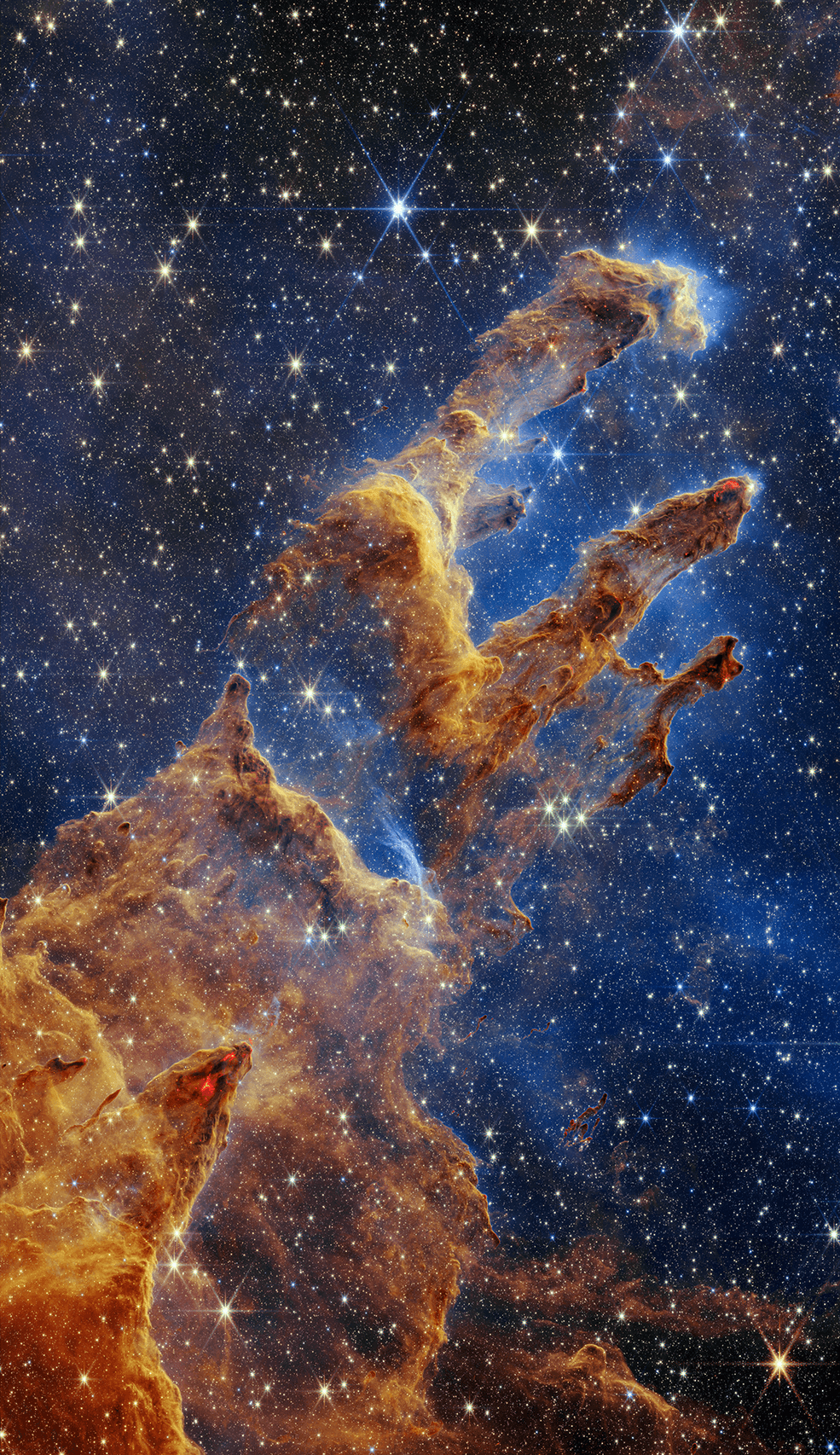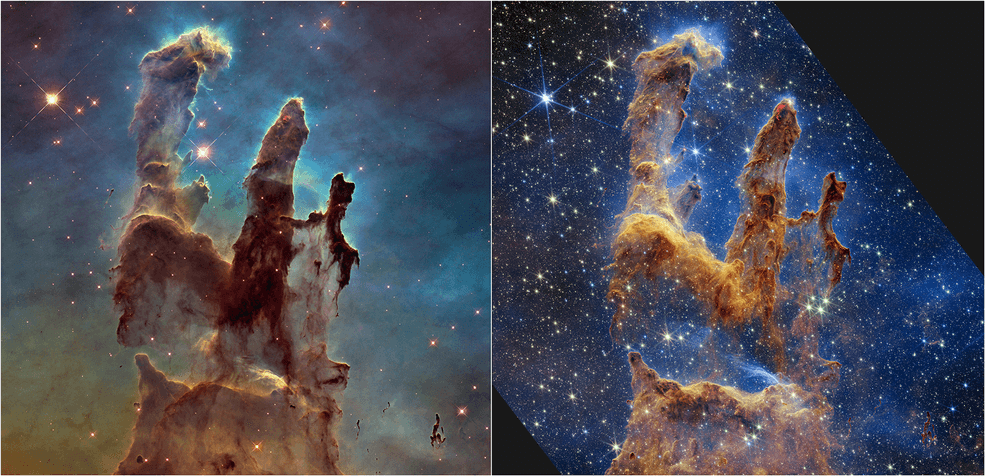NASA's James Webb Space Telescope photographed a lush and very detailed view of the "Pillars of Creation". An area where new stars are formed in dense clouds of gas and dust that was previously photographed in an iconic image by the Hubble Space Telescope at the beginning of its operation and which it returned to after the upgrades, together with powerful ground-based observatories

The XNUMXD pillars look like solid rocks but are much more permeable. These columns are composed of cool interstellar gas and dust that - at times - appear semi-transparent in near-infrared light - precisely the range of frequencies observed by the Webb Space Telescope.
Webb's new Pillars of Creation photographs, first made public when taken by NASA's Hubble Space Telescope in 1995, will help researchers refine their models of star formation through a much more accurate count of newly formed stars, along with the amounts of gas and dust in the region. Over time, they will begin to form a clearer understanding of how stars form and erupt from these dusty clouds over millions of years.
Comparison of two photographs of the Pillars of Creation. Hubble's visible light view, left, showing darker columns rising from the bottom up, ending in three dots. On the right, the near-infrared Web image shows the pages, but they are semi-transparent and painted a rust-red color.
NASA's Hubble Space Telescope made the Pillars of Creation famous after their first photograph in 1995, and returned to them in 2014, after a series of upgrades, to reveal a sharper and wider view in visible light, shown above left. A new, near-infrared view from NASA's James Webb Space Telescope, right, helps us peer through more of the dust in this star-forming region. The thick and dusty brown columns are no longer so opaque, and many red stars in the process of their formation are also visible.

The newly formed stars are the highlight of the photograph from the Webb Near Infrared Camera (NIRCam). These are the bright red balls that are usually surrounded by spikes and are outside one of the dusty pillars. When bonds of sufficient mass form within the columns of gas and dust, they begin to collapse under their own gravity, slowly heat up, and eventually form new stars.
What are those wavy lines that look like lava on the edges of some of the columns? These are emissions from stars that are still forming in the gas and dust. Young stars occasionally shoot supersonic jets that collide with clouds of material, such as these thick columns. It also sometimes causes shocks that can create wavy patterns like a boat does when it moves through water. The crimson glow comes from the hydrogen molecules whose energy comes from the movement in the jet and the shocks in the second and third columns from above. It is estimated that these young stars are only a few hundred thousand years old.
Although the near-infrared light camera appears to have allowed Webb to "penetrate" through the clouds to reveal great cosmic distances beyond the poles, there are no galaxies in this view. Instead, a mixture of transparent gas and dust known as the interstellar medium in the densest part of our Milky Way galaxy's disk blocks our view of the deeper universe.
Although this area was photographed for the first time by Hubble in 1995 and repeated in 2014, many other observatories - mainly ground observatories are also deep in this area. Each advanced instrument offers researchers new details about this star-studded region.
This well-cropped image is located within the vast Eagle Nebula, which is 6,500 light-years away.
For NASA's announcement (from which you can also download the high-resolution images)
More of the topic in Hayadan:
